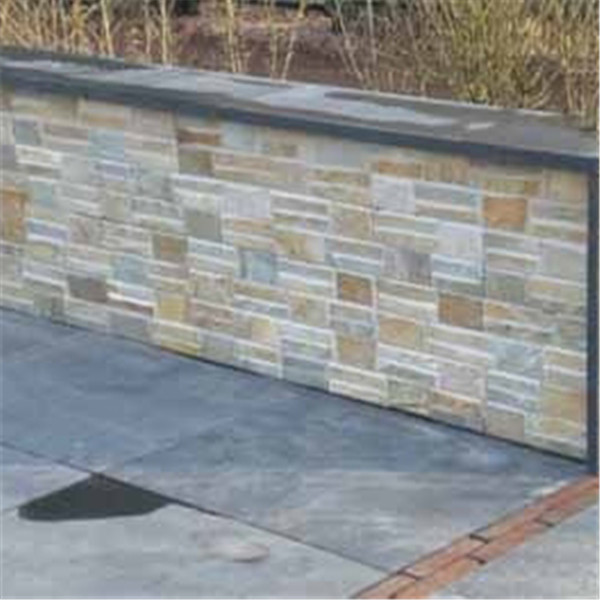Introduction:
In recent years, homeowners and interior designers have increasingly turned their attention towards incorporating natural elements into home design. One such trend that has gained significant popularity is the use of cultured stone in kitchen spaces. Cultured stone, also known as manufactured or faux stone, offers a unique blend of style, durability, and versatility that makes it an ideal choice for kitchen surfaces. This article explores the various aspects of a cultured stone kitchen, from its origins and composition to its benefits and design possibilities, highlighting why it has become a top choice for homeowners seeking a sophisticated and long-lasting kitchen space.
Section 1: The Origins and Composition of Cultured Stone
Cultured stone is a man-made product that replicates the appearance of natural stone, making it an affordable and accessible alternative. The manufacturing process typically involves mixing lightweight aggregates, pigments, and binders, which are then molded and colored to resemble a wide range of natural stones, including granite, marble, limestone, and slate. The result is a product that captures the beauty and texture of natural stone while offering enhanced durability and versatility.
Section 2: The Benefits of Cultured Stone in the Kitchen
2.1 Durability and Resistance:
One of the primary advantages of using cultured stone in a kitchen is its exceptional durability and resistance to various elements. Unlike natural stone, cultured stone is non-porous, making it resistant to stains, scratches, and heat. This feature makes it an excellent choice for countertops and backsplashes, as it can withstand the rigors of daily kitchen activities without losing its luster or requiring extensive maintenance.
2.2 Versatility in Design:

Cultured stone offers a vast array of design possibilities, allowing homeowners to create a kitchen space that matches their unique style and preferences. The product can be molded into different shapes and sizes, enabling the creation of intricate patterns, curves, and edges. Moreover, cultured stone comes in a wide range of colors and finishes, ensuring that it can seamlessly integrate into any kitchen design theme, from modern and minimalist to traditional and rustic.
2.3 Cost-Effectiveness:
Compared to natural stone, cultured stone is significantly more cost-effective. The manufacturing process allows for greater control over the product's appearance, resulting in a more consistent and affordable alternative. Furthermore, the lightweight nature of cultured stone reduces installation costs and eliminates the need for additional structural support. These factors make cultured stone a budget-friendly option for homeowners looking to achieve the look and feel of natural stone without breaking the bank.
Section 3: Design Possibilities with Cultured Stone in the Kitchen
3.1 Countertops:
Cultured stone countertops offer a luxurious and sophisticated look that can become the centerpiece of any kitchen. The range of colors and patterns available allows homeowners to choose a design that complements their cabinetry, flooring, and overall kitchen theme. Whether opting for a sleek and modern quartz-like surface or a warm and earthy granite imitation, cultured stone countertops provide a beautiful and durable solution for food preparation and dining.
3.2 Backsplashes:
Backsplashes play a crucial role in protecting kitchen walls from splatters and spills while adding an element of style to the overall design. Cultured stone backsplashes offer a visually striking alternative to traditional tiles or painted walls. The variety of textures, colors, and shapes available makes it possible to create a backsplash that seamlessly blends with the countertops and cabinetry, creating a cohesive and aesthetically pleasing kitchen space.
3.3 Flooring:
While natural stone flooring can be expensive and challenging to maintain, cultured stone flooring provides a practical and visually appealing alternative. Whether opting for the classic elegance of marble or the rustic charm of slate, cultured stone flooring can withstand heavy foot traffic, spills, and frequent cleaning without losing its beauty or structural integrity. Additionally, the textured surfaces of cultured stone flooring provide slip resistance, ensuring safety in high-traffic areas such as kitchens.
Section 4: Maintenance and Care of Cultured Stone
Cultured stone requires minimal maintenance compared to natural stone, making it an attractive choice for busy homeowners. Regular cleaning with mild soap and water is usually sufficient to keep the surface looking pristine. However, it is important to avoid abrasive cleaners or harsh chemicals that may damage or discolor the stone. Additionally, applying a sealant periodically can help protect the surface and enhance its longevity.
Section 5: Conclusion
In conclusion, a cultured stone kitchen offers a perfect blend of style and durability, making it a popular choice among homeowners and designers alike. The ability to replicate the appearance of natural stone while providing enhanced durability and versatility makes cultured stone an attractive option for kitchen surfaces. From blog here and backsplashes to flooring, the design possibilities are endless, allowing homeowners to create a kitchen space that reflects their unique style and preferences. Moreover, the cost-effectiveness and ease of maintenance make cultured stone a practical choice for those seeking a long-lasting and visually stunning kitchen. With its timeless appeal and exceptional performance, a cultured stone kitchen is sure to elevate the overall aesthetics and functionality of any home.
